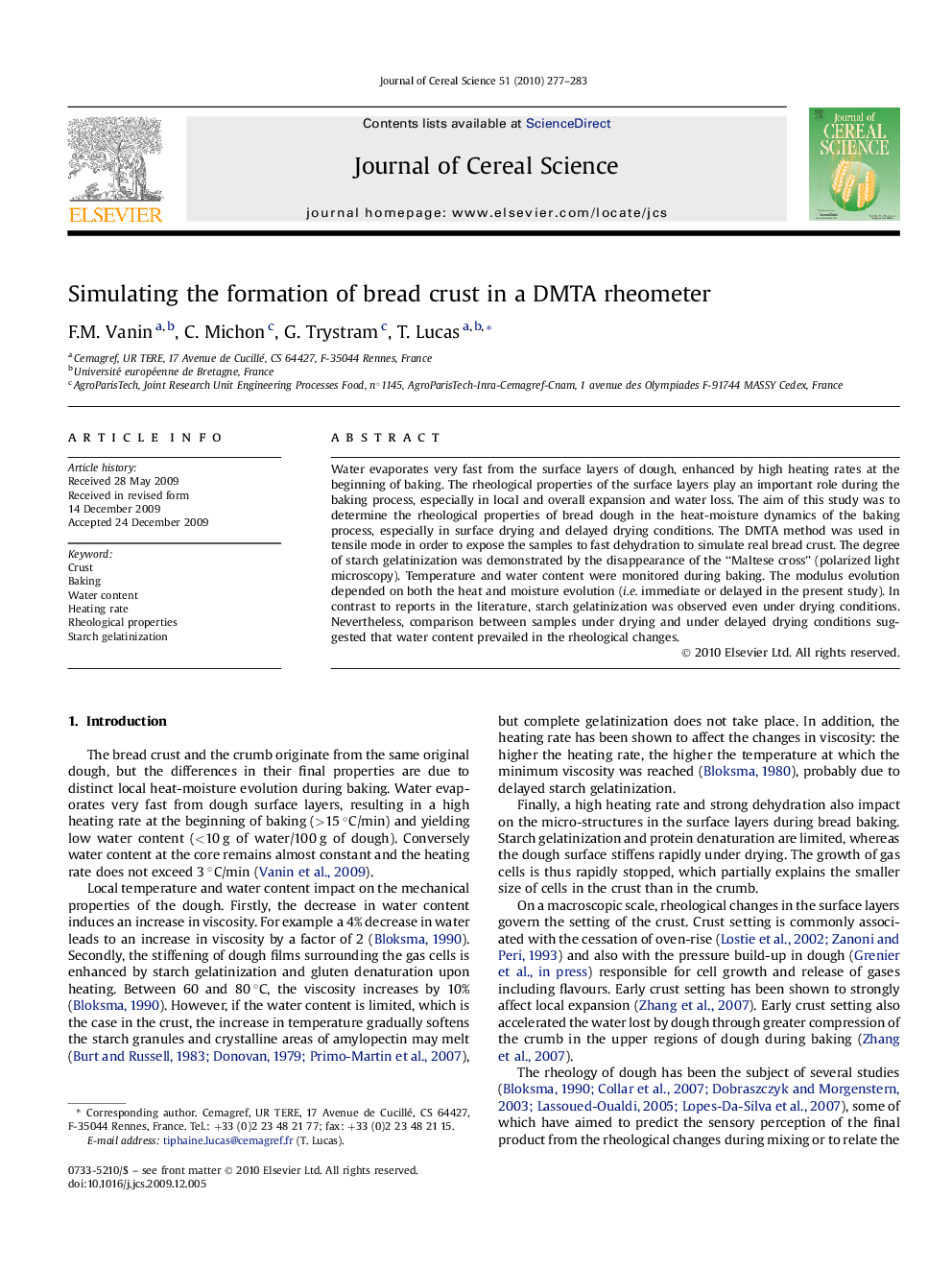| Article ID | Journal | Published Year | Pages | File Type |
|---|---|---|---|---|
| 4516207 | Journal of Cereal Science | 2010 | 7 Pages |
Water evaporates very fast from the surface layers of dough, enhanced by high heating rates at the beginning of baking. The rheological properties of the surface layers play an important role during the baking process, especially in local and overall expansion and water loss. The aim of this study was to determine the rheological properties of bread dough in the heat-moisture dynamics of the baking process, especially in surface drying and delayed drying conditions. The DMTA method was used in tensile mode in order to expose the samples to fast dehydration to simulate real bread crust. The degree of starch gelatinization was demonstrated by the disappearance of the “Maltese cross” (polarized light microscopy). Temperature and water content were monitored during baking. The modulus evolution depended on both the heat and moisture evolution (i.e. immediate or delayed in the present study). In contrast to reports in the literature, starch gelatinization was observed even under drying conditions. Nevertheless, comparison between samples under drying and under delayed drying conditions suggested that water content prevailed in the rheological changes.
